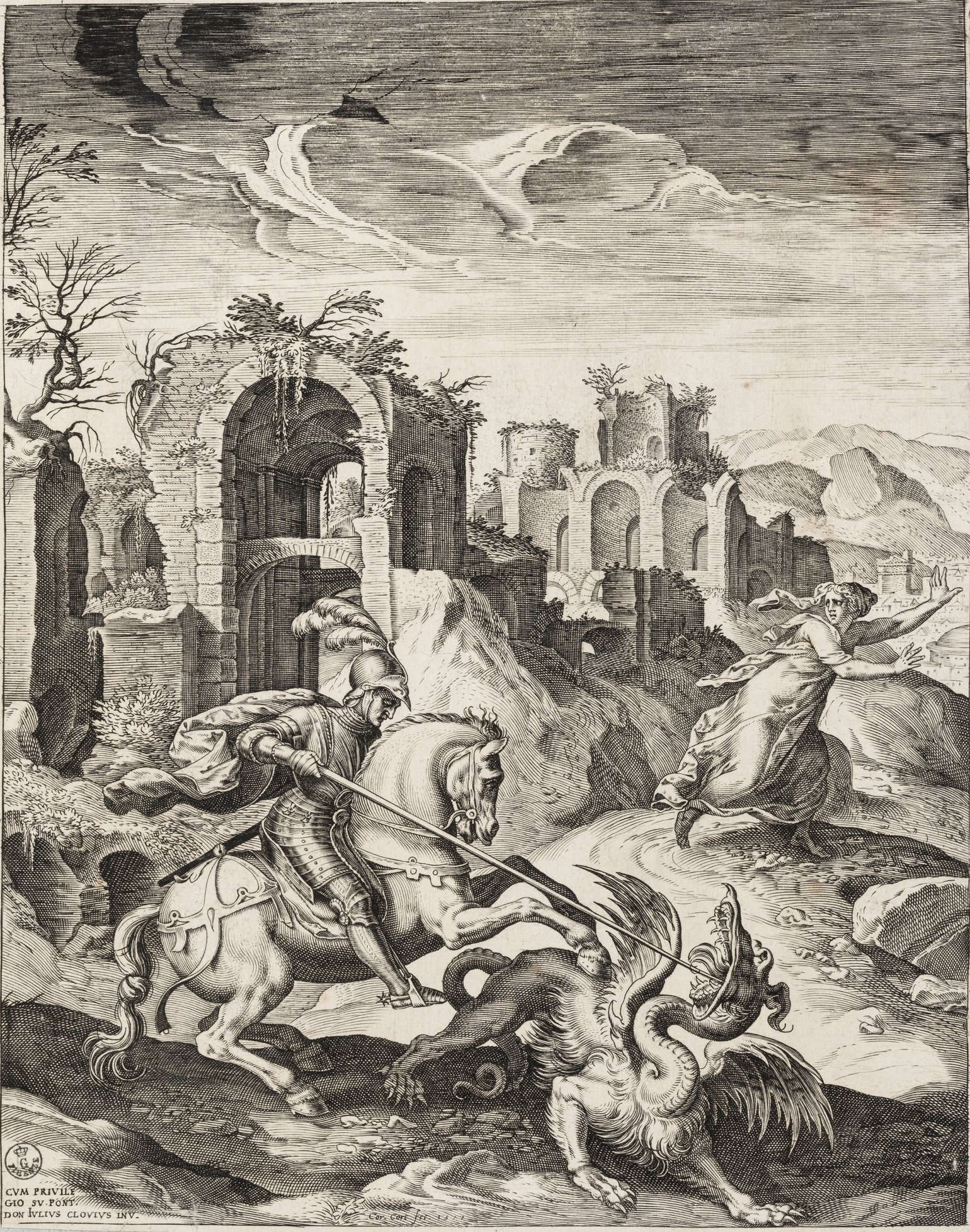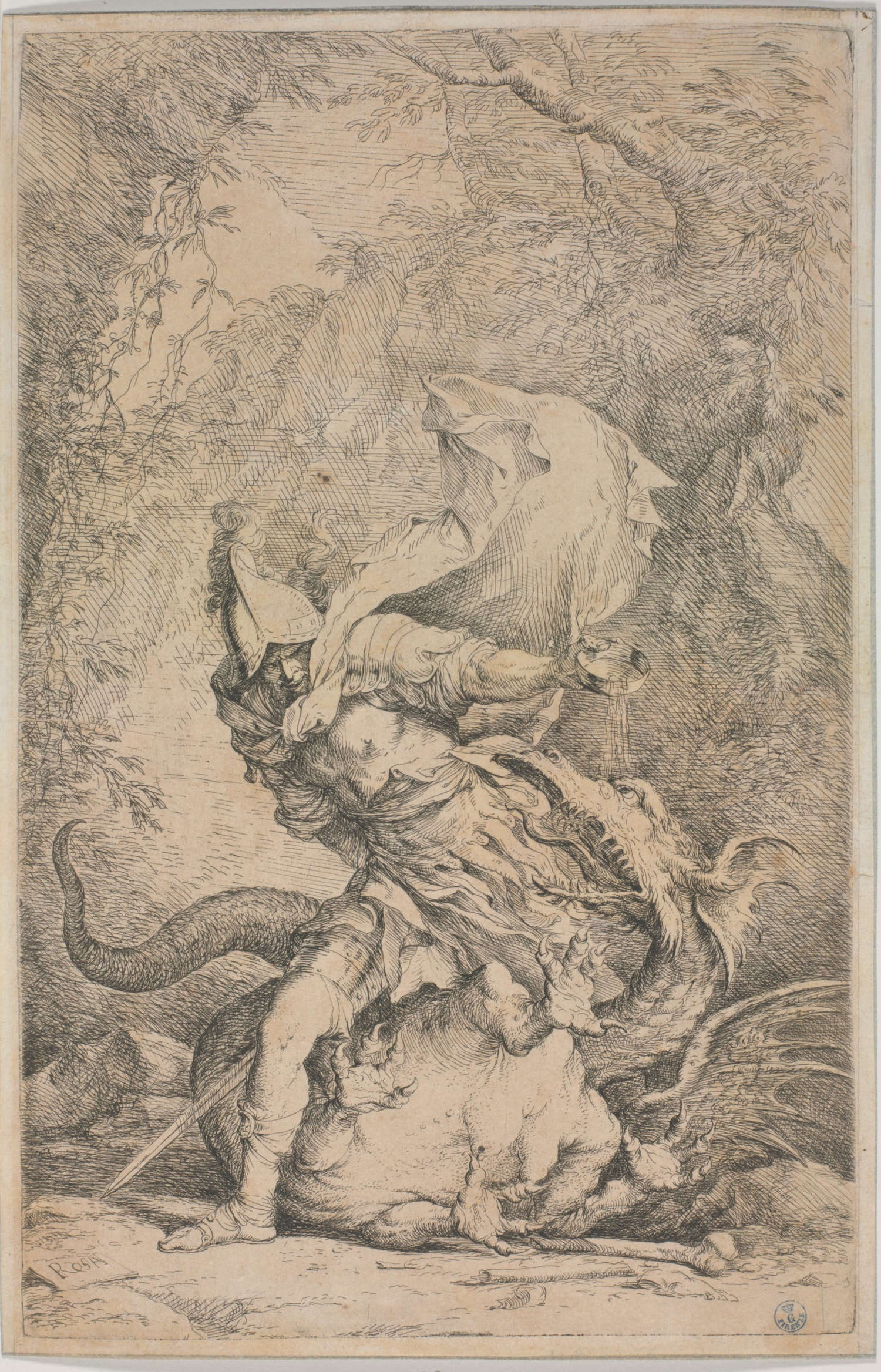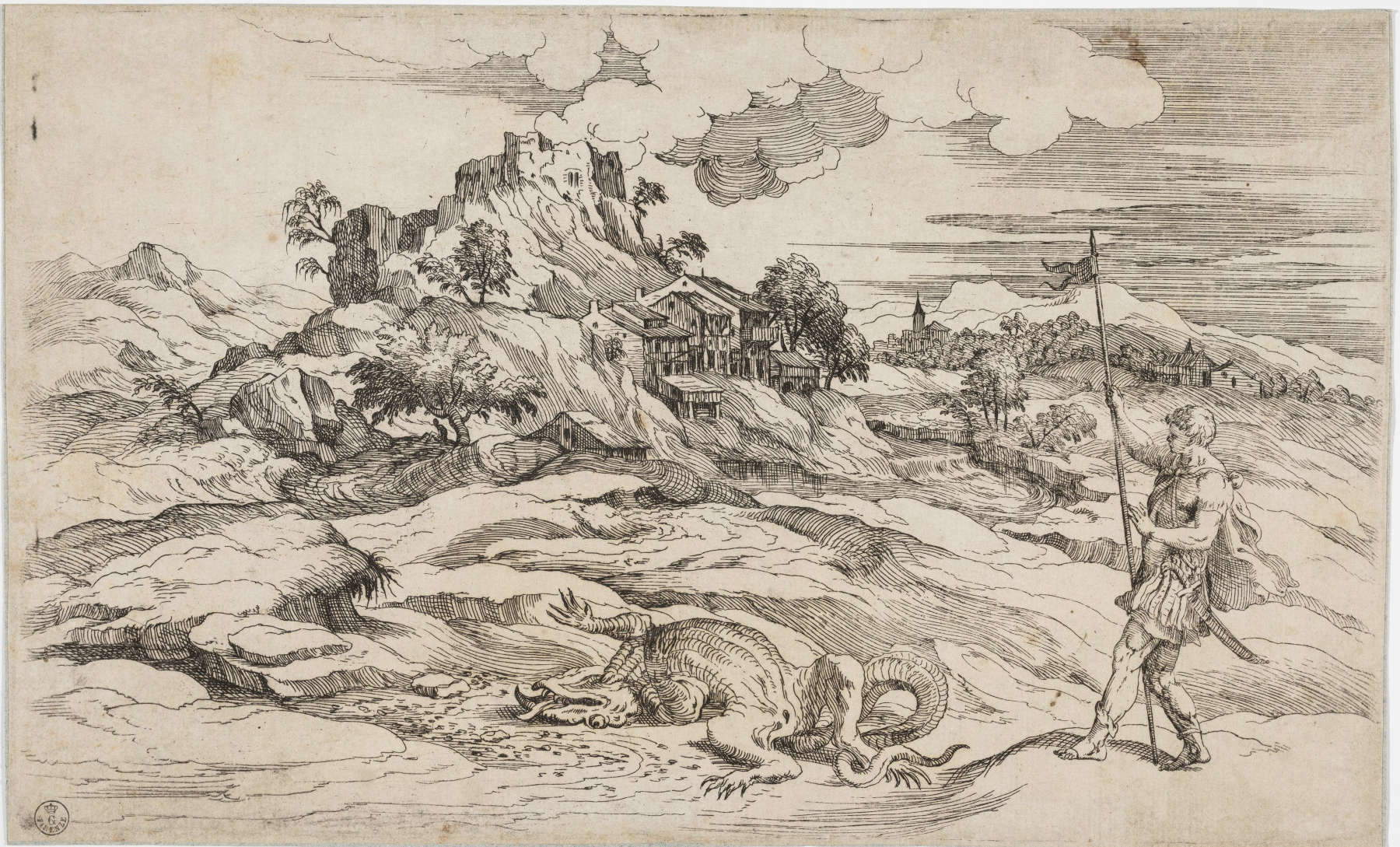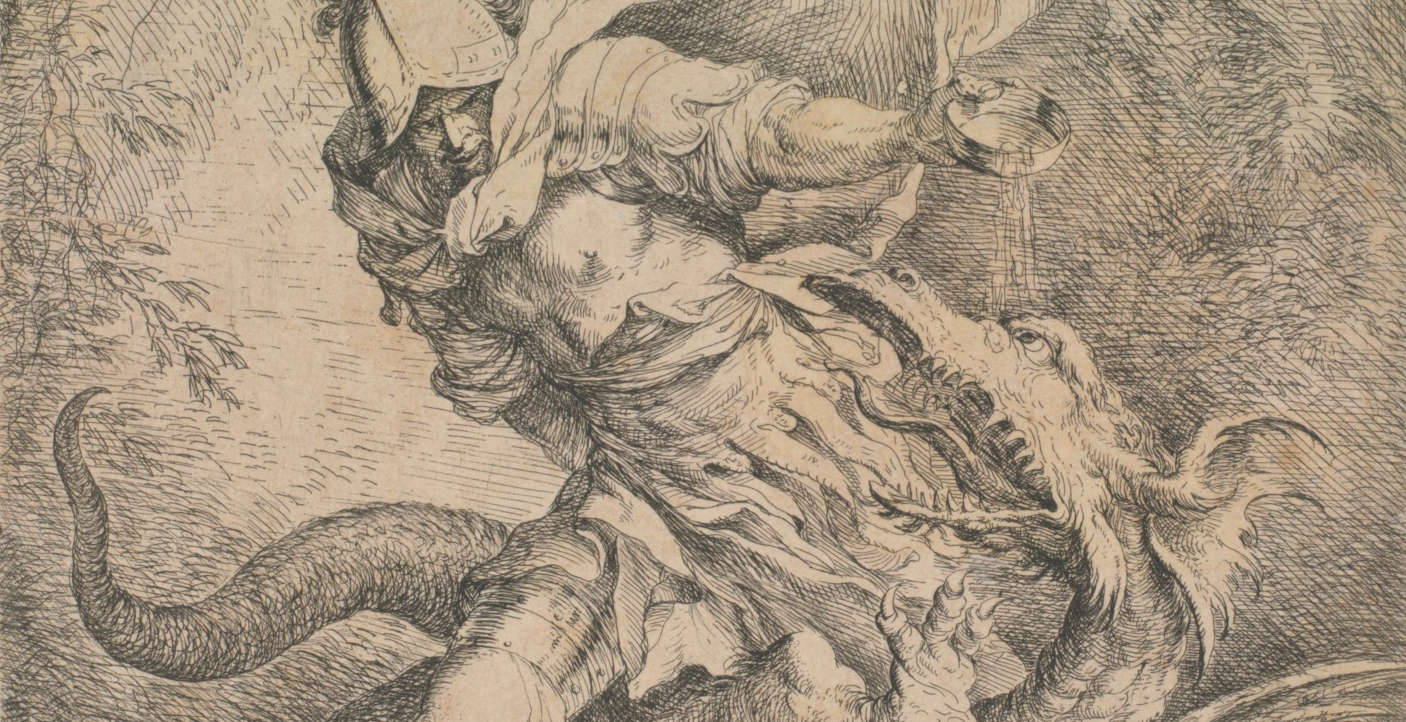Three... Uffizi dragons arrive at Lucca Comics&Games for 50 years of Dungeons & Dragons
The Uffizi Galleries in Florence will celebrate the 50th anniversary of the most famous fantasy role-playing game, Dungeons & Dragons, by presenting three 16th- and 17th-century engravings depicting the legendary monster, from works by Titian (Pieve di Cadore, 1488/1490 - Venice, 1576), Salvator Rosa (Naples, 1615 - Rome, 1673) and Cornelis Cort (Hoorn, 1530 - Rome, 1578). The three dragons will be displayed in Lucca ’s medieval church as part of the tribute to the game, recognized as the most influential in the fantasy cultural landscape. The Galleries are therefore sending the works to this year’s Lucca Comics&Games, giving a symbolic celebration of the anniversary. The triptych will be displayed in a striking location: the medieval Church of the Servants. There, the Uffizi dragons will be joined by Lucca’s major exhibition dedicated specifically to Dungeons & Dragons, curated by Jon Peterson and Jessica Lee Patterson, entitled Gateway to Adventure - 50 Years of D&D Art, which brings together more than one hundred works and memorabilia related to the game’s imagery. The public will be able to view both exhibitions starting at 5 p.m. on Saturday, Oct. 26. The engravings are works of art created between the 16th and 17th centuries, featuring mythological dragons depicted by masters Cornelis Cort, from Julius Clovius, with the engraving St. George and the Dragon dated 1577; Salvator Rosa, with Jason Sleeps the Dragon dated 1663-1664; and Giovanni Battista D’Angolo, known as del Moro, with the work Landscape with St. Theodore and the Dragon dated 1560-70, derived from Titian.
“The dragon,” said Simone Verde, director of the Uffizi Galleries, “is perhaps the most famous and beloved of fantastic creatures, to the point that it was, even in ancient times, transmigrated from the original Chinese mythology to the collective imaginations of all the peoples of the world. In the context of the exhibition of the three beautiful engravings featuring it at Lucca Comics&Games, it takes on the symbolic significance of the cosmopolitan journey of image, art, and the pervasive energy of popular culture, which, since time immemorial, knows no borders. Not only that. It is through this initiative, in fact, that the Galleries reinforce the fruitful cultural alliance implemented in recent years with the event: just in these days we renewed our collaboration agreement for another two years.”



The works
Cornelis Cort, from Julius Clovius, Saint George and the Dragon, burin, 1577. This print by Cornelis Cort, which has been in the Uffizi since the second half of the 18th century, is signed and dated by one of the most important Dutch engravers of the 16th century, active for a long time in Italy. It reproduces a lost work by Giulio Clovio, a famous illuminator of the time. Giorgio Vasari, in his biography of Clovio, mentions a miniature depicting St. George, donated by Cardinal Farnese to Emperor Maximilian II.
Salvator Rosa, Jason puts the dragon to sleep, etching and drypoint, 1663-1664. In the scene depicted by Salvator Rosa, Jason is portrayed during the third test to obtain the Golden Fleece, as he confronts the dragon guarding the precious ram’s mantle. The hero is caught in the act of throwing the magic potion on the monster, putting it to sleep. Salvator Rosa took up this subject several times, through studies, drawings and paintings.
Giovanni Battista D’Angolo known as del Moro, from Titian, Landscape with Saint Theodore and the Dragon, etching, 1560-70 - Giovanni Battista D’Angolo’s etching is a reproduction of a pen-and-ink drawing by Titian Vecellio, now in the Morgan Library and Museum in New York. The soldier in armor depicted is not St. George, as was formerly believed, but St. Theodore, protector of Venice before St. Mark, who killed the dragon with a single spear stroke.
 |
| Three... Uffizi dragons arrive at Lucca Comics&Games for 50 years of Dungeons & Dragons |
Warning: the translation into English of the original Italian article was created using automatic tools. We undertake to review all articles, but we do not guarantee the total absence of inaccuracies in the translation due to the program. You can find the original by clicking on the ITA button. If you find any mistake,please contact us.



























